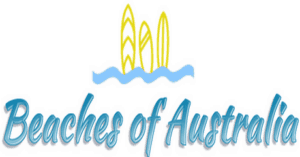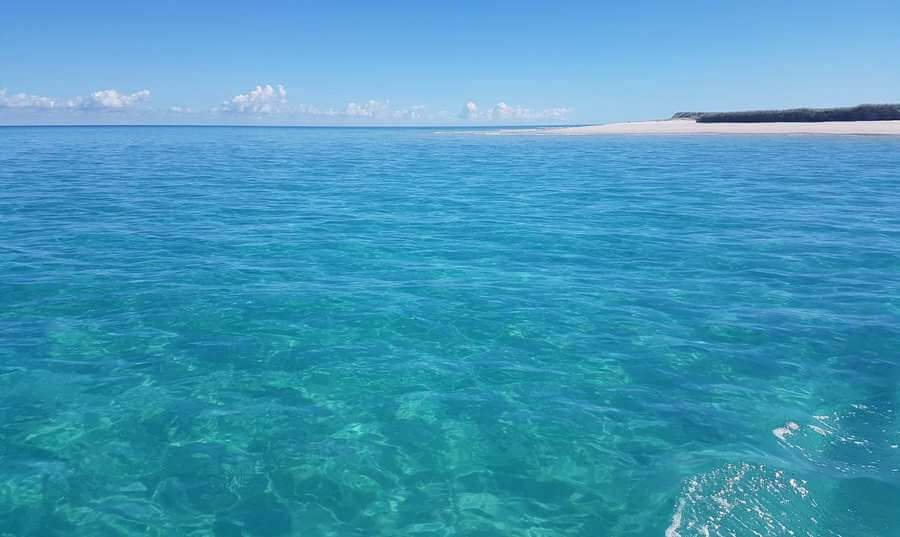Australia is a coastline paradise of beautiful beaches. In fact, there are around 10,000 beaches all around the country. While this seems like quite the adventure to go beach hopping (which it can be!) it is important to note how to spot safety issues and what beaches are considered to be the safest.
Bondi Beach is considered the safest beach in Australia. It’s one of the most popular beaches that has lifesavers patrolling the beach all day. Bondi Beach is considered the safest beach because of the number of patrolled lifeguards for those swimming, you should swim only on patrolled beaches.
The ones that are not patrolled are primarily used for fishing or surfing. Fishing is a hot activity in Australia, but there’s plenty of people who want to actually swim as well!
Taking advantage of some of the hot spot beaches in Australia for swimming is part of the thrill of visiting.
Australia is located in an area of the Pacific Ocean where its coastlines can experience some pretty dangerous waves.
Also, the marine life in the waters can be a threat as well. Some beaches do not allow swimming due to these conditions. This ensures the safety of all residents, visitors, or tourists that go to the beach in Australia.
They are just stunning and gorgeous beaches with the perfect seascape views and sunshine!
Safest Popular Patrolled Beaches In Australia
When considering going for a swim, it is best to choose a beach that is patrolled. This helps with safety precautions.
While there are lifeguards at the following beaches, it is important to note that personal responsibility should be used when visiting these areas and taking extra caution to ensure the safest and most fun experience at any of these locations.
With that said, below are some of the most popular beaches in Australia that are patrolled!
List Of The Safest Popular Beaches.
Bondi Beach In Sydney NSW
This golden sanded beach and its pristine water have been a huge hit with people since the early 1900s. It is easily one of the most visited beaches in Australia.
It has been known to attract close to 50,000 visitors. With that much popularity, it is even more essential that it gets patroled!
Byron Bay In New South Whales
This beautiful area is well known for its swimming and diving sites for guests. There is also the Cape Byron lighthouse to visit. It is plentiful for exciting beach activities to take place!
If you set out on a walk 10 minutes down the beach you will pretty much end up on a beach of your very own. Keep a lookout for dolphins and other ocean life out in the waters.
Noosa Beach In Queensland
Noosa’s generally calmed water beach is a hot spot for families for a sunshine beach day.
It is patrolled to the east and west sides of the groyne. The beach has beautiful white sands with blue water. It is also a well-known beach for surfing in Queensland by the locals who surf there daily.
Burleigh Heads, In Queensland
This Gold Coast beach is possibly the most patrolled beach in Australia. It gains heavy foot track of those wanting to catch a few waves or even walk the various walking tracks near the beach. This is a very popular beach with many visitors using it daily for both surfing and swimming.
Man-Made Lagoons And Ocean Pools
In an attempt to create a safer beach environment, there are various man-made lagoons and ocean pools that have been constructed on some of the most popular beaches.
These areas feature built-up rock formations that separate the designated areas from the ocean waves and marine life.
This is important because it gives people the chance to enjoy some of the waters of the ocean with fewer dangers lurking around. It provides a tranquil area for taking a dip.
Places like Whitehaven for example in Whitsunday seem safe on the surface. This particular beach has stark white sands and brilliantly blue waters.
However, jellyfish are a common predator lurking the waters. This area has a man-made lagoon for safer swimming.
Places like Whitehaven and other beaches also feature enclosures. These usually include wooden poles placed in the waters to mark out safe swimming areas.
Where these poles are placed will determine the best possible place for swimming or wading in the water.
These areas are deemed as safe as the tides won’t crash too heavily in this area. It also means less marine life, however, marine life can still access the areas through the poles. This includes things like fish or jellyfish.
Keep in mind that is can take up to 40 minutes before you know, you have been stung by any of the marine stingers if you’re not feeling well dial 000.
Safe Beach Practices To Implement
Knowing the risks among the beaches in Australia is one thing, but knowing what safety precautions to take is another. Safety comes with proper practice and some common sense.
Always watch your children when swimming as it only takes a second for accidents to happen.
This is why headed to a patrolled beach is considered the safest thing to do. However, if visiting one of the other many beaches is on the list of things to do, remembering some safety tips is critical.
Always remember to use an SPF 50 plus sunscreen at any of the beaches in Australia, If you don’t you will soon wish you had! The sun here is very hot and unforgiving so cover up and wear a hat too!.
Tips To Stay Safe At The Beach
- Sunscreen
- Sunshades or popup tents
- Sun shirts
- Lots of drinking water
- Insect repellent (for sand flies in some areas)
- Swim between the flags at all times
- Check the weather conditions before going
- Walk slowly into the water this gives the marine life, time to move away
- Watch children at all times in or near the water
- Call for help if someone is struggling in the water
- Watch for rips and fast-flowing water
These are some crucial tips to think about when visiting these beaches.
Watch Out For Currents And Rips
Rip currents are the biggest cause of safety issues at Australian beaches. More times than not, someone gets caught up in a current. These current occur at the patrolled beaches just as they do at unpatrolled beaches.
When at a patrolled beach and caught in a current, it is important to know how to get out of the current or to wave down a lifeguard with one arm in the air, waving it around.
The tip to getting out of the current includes swimming parallel with the current. Swimming against will only drag someone out further. The other option is to float and let the rip carry a person closer to shore.
This is only a reasonable option if the person is an excellent swimmer.
Seek Out Medical Assistance As Soon As Possible
With marine life dangers, it is pivotal to seek medical assistance. The biggest threat in Australian waters is usually jellyfish. A jellyfish sting can cause great pain and other problems like respiratory issues.
Sharks are feared by many, however, jellyfish make a bigger appearance than sharks.
That’s why it’s important to be aware of their danger and call for assistance if needed. The emergency number for medical assistance is 000.
Respect Areas Where Swimming Is Not Allowed
It may be tempting to enter waters on some of the gorgeous beaches of Australia, however, swimming is prohibited for a reason.
It is critical to follow and respect any areas where swimming is not allowed. This includes keeping a watchful eye on swimming in unpatrolled areas.
While there isn’t necessarily a singular beach that is the safest in Australia, there are beaches with the safety precautions in place.
This makes for a better beach experience. When combined with following the basic tips for enjoying the beach, safety will always be at the top of the list!
Follow onto our next post about What is the Most Dangerous Beach in Australia?. We list some of the most problem beaches from Australia so that you can travel safely.
More Pages On Beaches
Not all beaches are suitable for swimming for a number of reasons. Some of these areas are more practical for sand activities or photography. It is important to know whether or not a beach is safe...
Visiting the beach is a beautiful opportunity to see mother nature at its best. There's nothing quite like hearing the waves rolling in on a soft, sandy shoreline. While visiting the beach is a...


